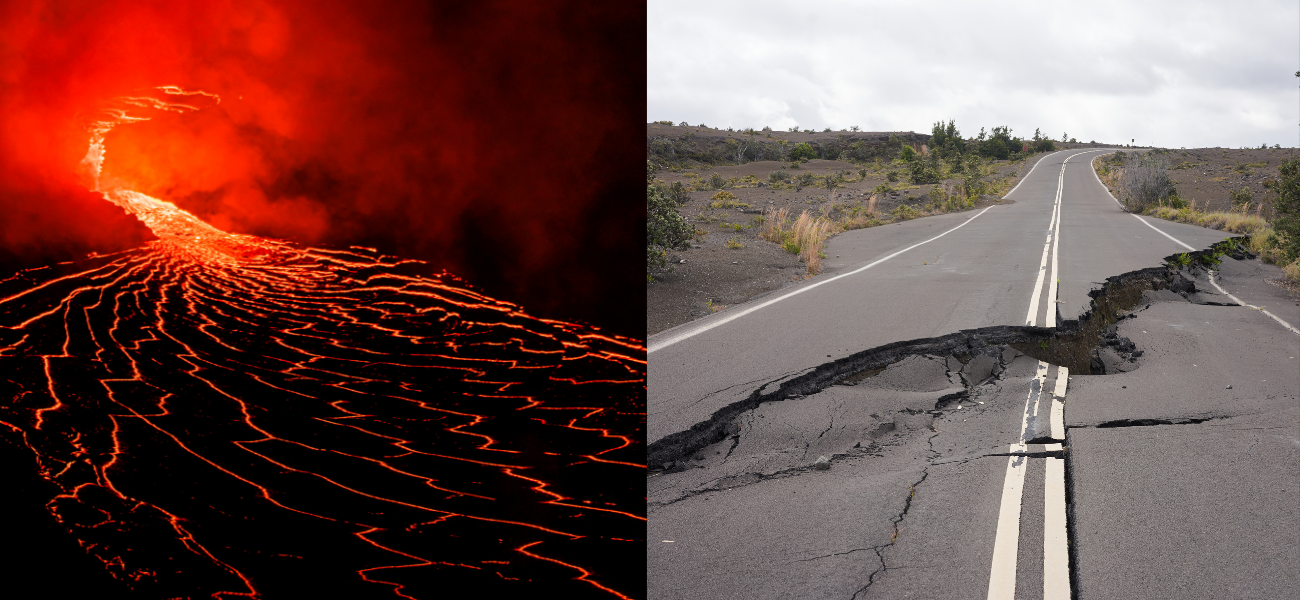
Iceland Town Continues To Sink As Increased Seismic Activity Threatens Volcanic Eruption
By Favour Adegoke on November 16, 2023 at 9:45 AM EST
Iceland faces an imminent volcanic threat as a town sinks due to seismic activity. Magma accumulation beneath Grindavik is likened to an "underground freight train," posing eruption risks.
A massive protective wall is under construction to shield the Svartsengi geothermal power plant. Ongoing tremors in the Reykjanes Peninsula raise concerns, and increased sulfur dioxide levels prompt evacuations.
Residents grapple with uncertainty and damage from earthquakes, leaving many homeless. Iceland's seismic location adds complexity to predicting volcanic behavior.
Magma Accumulates Under A Sinking Iceland Town Like An 'Underground Freight Train'
Iceland, Volcano - Iceland. Hundreds of earthquakes hit Iceland in the past day as the Volcano starts to erupt ? pic.twitter.com/Y1zl10Ow30
— ??RonEnglish????????? (@RonEng1ish) November 16, 2023
In Iceland, a town is steadily sinking as substantial rifts rip through buildings and roadways, indicating the imminent threat of a volcanic eruption.
According to Matthew James Roberts from the Icelandic Met Office, who spoke to the BBC (perDaily Mail), "Magma is accumulating just a few hundred meters below the surface resembling an "underground freight train." He cautioned that if the eruption persists, "nature always wins."
Roberts added that even without a Fagradalsfjall volcano explosion nearby, lava may still flow for weeks from fissures, potentially impacting the evacuated fishing community of Grindavik.
Scientists have also suggested that an eruption could lead to lava flow into the deserted town, which had 4,000 residents evacuated on Saturday.
Massive Wall To Be Constructed To Prevent Lava From Hitting Iceland Town
Iceland - Volcano. Here the earth shaking moves a rock towards the lava ? pic.twitter.com/etDXQvuxnS
— ??RonEnglish????????? (@RonEng1ish) November 16, 2023
With the looming threat of a potential volcanic eruption, efforts are underway to swiftly construct a massive protective wall to prevent lava flows from impacting the town and a nearby geothermal power plant.
This defensive wall, thought to be the largest in Iceland, aims to protect the Svartsengi geothermal power plant.
The Reykjanes Peninsula, southwest of Reykjavik, continues to experience tremors, with over 400 recorded since midnight and a 2,000-year-old fissure steadily expanding.
Ongoing earth movements have disrupted electricity in the eastern part of Grindavik, with subsidence potentially damaging power lines. The seismic activity is attributed to the peninsula's location between the Eurasian and North American tectonic plates, making Iceland a seismic and volcanic hotspot.
Experts Unsure If Lava Will Cool, Solidify Or Erupt Amid 'Hundred Earthquake Per Hour'
Iceland ?? pic.twitter.com/1v25rD136c
— ROAM THE PLANET (@roamtheplanet0) November 16, 2023
With magma potentially as close as 500 meters below the surface, there is speculation about its behavior—whether it might cool and solidify or erupt.
According to experts, the ongoing seismic activity suggests continued activity in the magma corridor. Per Sigridur Kristjansdottir from the Norwegian Meteorological Agency, the situation has "just been very similar to the past few days," marked by "about eighty to a hundred earthquakes per hour, most below magnitude two, but a few above magnitude two."
He added: "We also see an expansion in our GPS measurements, so there is still something going on."
Residents Reflect On Fleeing Their Home With Nothing Amid Earthquakes
Iceland - Volcano is starting to erupt. Mass evacuations are happening. pic.twitter.com/FDtz3qOm3a
— ??RonEnglish????????? (@RonEng1ish) November 16, 2023
Speaking to local media about the series of earthquakes that have caused extensive damage to homes and businesses and left numerous residents homeless or in a state of uncertainty. According to the Daily Mail, a resident, Katrín Sigurdardóttir, said, "The waiting is the worst because we don't know anything."
She continued: "It would be better if we knew the house was under lava because then we could just start from scratch. This uncertainty is so terribly difficult."
The evacuation order was issued on Tuesday when increased levels of sulfur dioxide, a potential eruption indicator, were detected by the Icelandic Met Office.
Magga Huld AfaÖmmudóttir shared her family's experience of being left homeless after earthquakes destroyed their property.
She described the terrifying earthquakes on Friday, recalling: "Friday was terrible, the earthquakes did not stop for many hours, but we left our house Friday night at 9 pm with clothes for two days and two boxes of photo albums, then just planned to come the next day to pick up more."
The mother of four added, "I feel ok, but get scared and jump at the slightest sound, and then we are homeless in one minute - I've got all kinds of emotions going on."
"We got to go inside the house on Monday. We had seven minutes to pick up what we wanted to save, but the emphasis was on personal things from my family - my mother, grandmother, and grandfather - and clothes."
